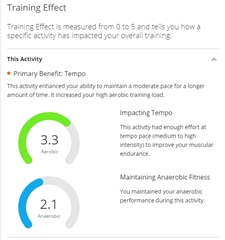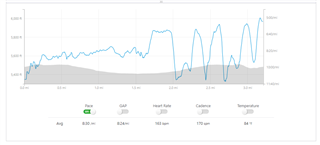I did today 5x10min threshold intervals - run with HRM Run belt. My HR zones are correctly set up. In the end I get:
Heart Rate Zones
|
Z5
|
0:05
|
0%
|
|
Z4
|
36:12
|
40%
|
|
Z3
|
12:44
|
14%
|
|
Z2
|
26:33
|
29%
|
|
Z1
|
12:43
|
14%
|



